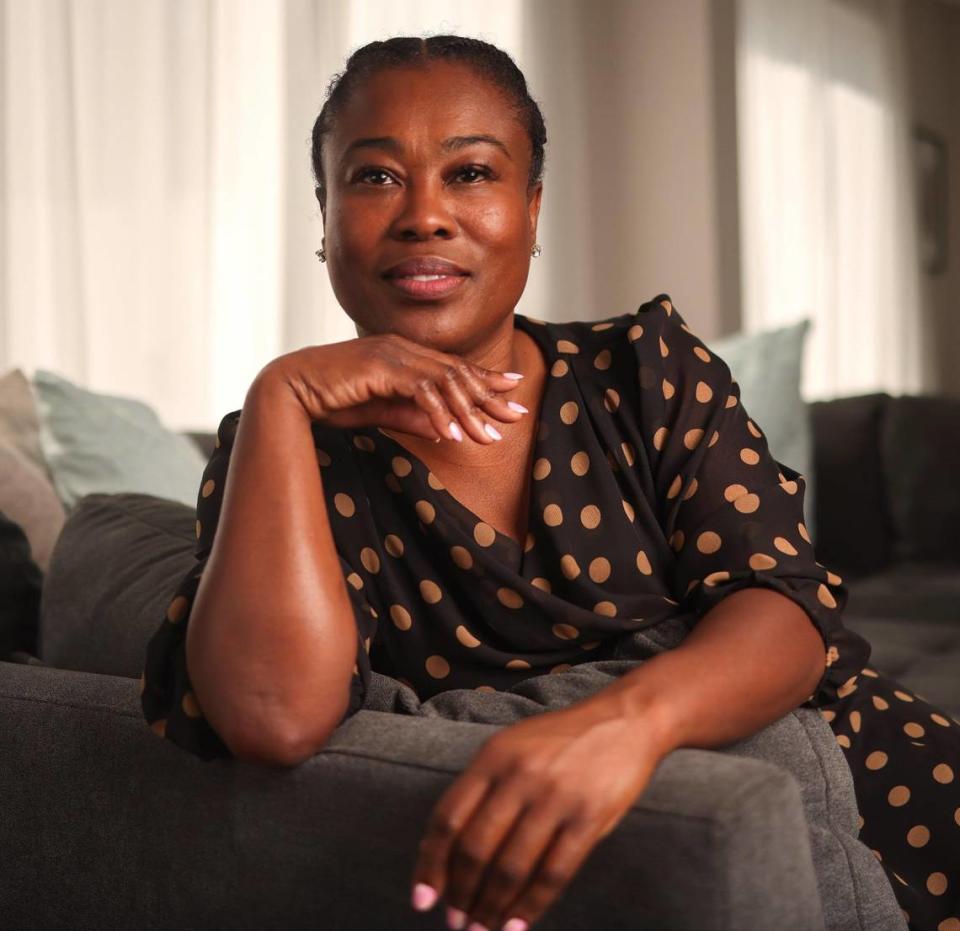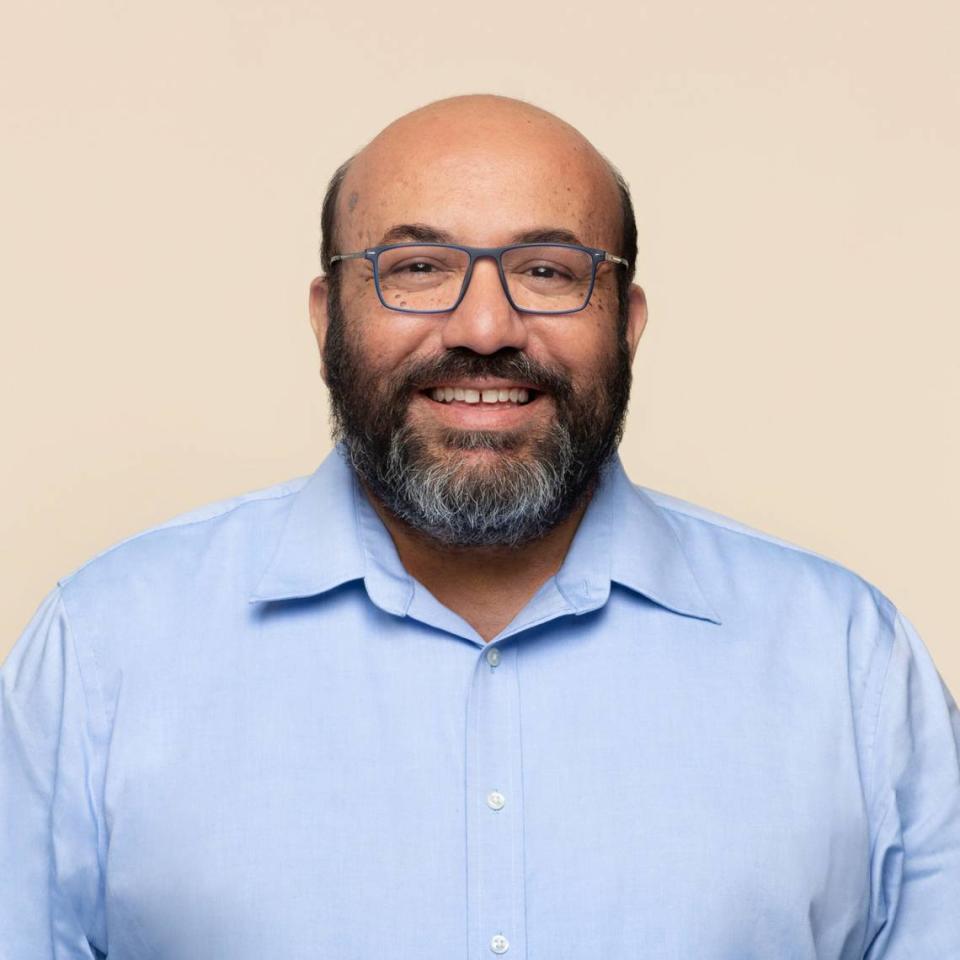Who lands the American Dream in Miami? How Hispanic and Black homebuyers are faring
Linda Neverson always wanted to buy a home.
The bank portfolio manager returned to South Florida after nearly two decades of living in Washington, D.C., New York, Chicago and, most recently, Tampa. Neverson wanted to raise her 8-year-old daughter near family. The support came in handy for the new single mother who lost her husband to COVID in 2021.
Neverson and her daughter moved in with relatives a year later, saved, then searched for the next place to call home. Within a year, she found it in a fixer-upper in a gated townhouse community off Interstate 75 in Miramar.
For the 48-year-old Neverson, who is Haitian-American, it’s the third residence she has owned and, according to new research, she is the exception in South Florida’s real estate market. Today, fewer Blacks and Hispanics are homeowners in Miami-Dade and Broward counties since 2012.
Miami-Dade had a total of 983,509 occupied residences in 2022, and most — a total of 507,879 — were lived in by owners, based on the U.S. Census Bureau. The national brokerage and research firm Redfin found Blacks make up 44% of all homeowners, down from 47% in 2012; Hispanics 51%, down from 55.4%; Asians 58.1%, down from 65.7%; and whites 62.9%, from 67.6%.
The same trend mostly holds true in Broward. The neighboring county has a total of 867,215 occupied residences and most — a total of 544,611 — are lived in by owners. Blacks make up 50.5% of those owner-occupied homes, down from 51.7%; Hispanics 57.1%, from 62%; and whites 73.4%, from 75.3%. Asians gained home ownership momentum in Broward, up to 73.8% from 73.3%.
Redfin gathered data between 2022 and 2012 on home ownership rates by race and ethnicity from the U.S. Census Bureau’s American Housing Survey for the Miami Herald. The data looks at all owners and renters based on race and ethnicity in both counties, and the percentages reflect the number of homeowners from each race or ethnic pool that own their own home.
“My experience in terms of the path towards home ownership is that it has gotten a lot harder,” said Neverson, bought her first home in 2008 in Chicago.
“What I believe is happening is the earning power or economic gap between minorities and others is widening,” she said. “The purchasing power in Miami is being diluted.”

Today, Miami-Dade has median sales prices of $610,000 for a single-family home and $410,000 for a condo. Broward falls slightly below at $570,000 for a house and $275,000 for a condo. These prices are out of reach for many South Floridians, especially with increased competition from wealthy investors, out-of-state executives and their staffers relocating to the region.
Home ownership a distant dream?
The trend of fewer homeowners travels far beyond South Florida, said Ken H. Johnson, a finance professor specializing in real estate at Florida Atlantic University in Boca Raton. It’s a national problem.
The Great Recession presented a window for budget-strapped aspiring homeowners to turn a dream into a reality when real estate prices fell. The open window closed for many over the years with inventory falling behind on demand, construction and labor costs rising, and median sales prices shooting higher and higher.
Thanks to wage gaps, home ownership became a distant dream for Blacks and Hispanics across the country as well as in South Florida. Nationwide, Asian households had the highest median income at $108,700, followed by whites at $81,060, then Hispanics, $62,800 and Blacks, $52,860, according to the U.S. Census Bureau’s 2022 national income report.
In South Florida, the median household income is $67,263 a year. Last year, the Miami Herald reported buyers need a six-figure salary — around $131,714 — to afford a home.
South Florida’s declining rates of home ownership concern Johnson, especially since real estate is known for building both individual and generational wealth.
“Home ownership is an amazing wealth creation vehicle,” Johnson said. “You’re paying a mortgage and your home is going up in value. If you don’t pay it, the bank will take the house. It’s forcing you to save.”
South Florida’s home ownership rates are expected to continue to decline in the coming years. Although all populations saw a 1 percentage point increase in home purchases between 2022 and 2021, Redfin Senior Economist Sheharyar Bokhari said that’s a blip.
“I wouldn’t use the slight uptick to think 2023 or 2024 would be better,” he said. “Mortgage rates increased in the last decade. That has eroded affordability and it has made it harder for people to become homeowners.”

What caused the home ownership decline?
Wage gaps are part of the problem, preventing more Blacks and Latinos from saving and purchasing their own homes.
Other challenges? Mortgage rates and credit scores, said real estate agent Robert Henry of the Kendall brokerage firm Miami Way Realty. The average 30-year mortgage rate from lender Freddie Mac hovers at 6.64%. Although that’s lower than a year ago at 6.86%, it’s still higher than 4.37% in February 2019.
Most of his clients have credit scores over 600 — what Henry recommends buyers need to purchase a home at the national mortgage rate — but he’s seen a few below that benchmark. Those buyers have had to hold on for another six months to a year to build higher scores.
Education can be a saving grace for aspiring Black and Latino homeowners, Henry said, a key factor that could help turn around the decline in home ownership rates.
“A lot of people are not taught to take risks,” Henry said. “Whites and Asians were taught at a young age to be more of a homeowner. Their parents positioned them to purchase those homes. They have wills and trusts in place that a lot of people don’t have.”
Neverson’s parents always emphasized the importance of home ownership to her and her eight siblings. Her father worked as a dishwasher at Tony Roma’s rib restaurant and her mother as a nursing aide, earning about a combined $10,000 a year.
In 1980, her parents poured five years’ of savings into a three-bedroom, two-bathroom house for about $50,000 in Little River in Northeast Miami. The house came with an attached efficiency, a living space with a separate entrance. Her parents rented it out and used the money to support their mortgage payment.
Growing up in Little River, Neverson remembers the avocado, mango and lime trees that lined her backyard and the weekend trips to the corner store to buy Charms Blow Pops and Lemonheads. The neighborhood was far from perfect. But Neverson stayed out of trouble and went on to become the first of her siblings to go to college.
The home stayed in the family until Neverson’s mom died in 2006. Due to a family dispute, the house was lost to foreclosure. “I have seen the good side and bad side of home ownership,” she said.
Today, she ensures her daughter knows the importance of home ownership and building credit to afford their own place in the future.
“It is important to me,” Neverson said, “because I understand we live in an economic divide.”

